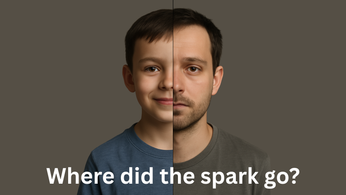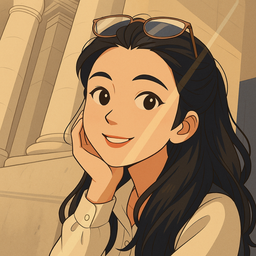
How Music and Art Can Supercharge an Ivy League Application
Turn music and art into Ivy League admissions gold—without sacrificing academic excellence.
“She plays violin… but will that help her get into Harvard?”
If you’ve ever wondered whether those late-night rehearsals, early morning art classes, or countless piano recitals are worth it—the answer is a resounding: yes... if it’s done right.
In the high-stakes world of Ivy League admissions, academic excellence is expected. What sets an applicant apart? Often, it’s the exceptional pursuit of something more—something creative, personal, and hard-earned.
This is where music and art can shine. But not in the way many assume.
Let’s unpack how your child’s artistic talents can actually boost their chances—and how to make sure they don’t become an afterthought in the admissions process.
The Ivy League Doesn’t Just Want Smart Kids. It Wants Interesting Ones.
All Ivy League schools use a holistic admissions process, meaning they look at the full picture—grades, test scores, essays, leadership, and extracurriculars. Within that framework, music and art are seen as powerful signals:
- Discipline
- Creativity
- Leadership
- Depth
Think of it this way: a student who’s spent 10+ years practicing cello at a national level has shown grit, focus, and a long-term commitment—qualities that translate far beyond music.
And in a sea of perfect GPAs, those qualities matter.
💡 At Dartmouth, over 65% of accepted students are active in the arts—music is especially prominent.
🎵 Music: More Than Just a “Nice” Activity
Music isn’t just “extra.” It’s a potential hook—one of the most valued extracurriculars at top universities.
But here’s the caveat:
🚫 Casual participation (like playing in school band alone) doesn’t move the needle.
✅ National awards, solo recitals, leading ensembles, composing original work—these do.
Why? Because top-tier colleges are flooded with students who also took piano lessons in 3rd grade. What they’re really looking for are students who’ve used music to go deeper, lead others, or connect it to a bigger story.
🎯 Tip: A student who combines their love of violin with neuroscience (e.g. researching how music affects the brain) stands out more than one who just submits a YouTube video of a solo.
🖼️ Visual Arts: A Portfolio with Purpose
If your student is a visual artist, don’t underestimate the power of a portfolio. Most Ivy League schools allow (and encourage) submissions of artwork—but the bar is high.
A strong art portfolio should show:
- Originality (no cookie-cutter pieces)
- Technical mastery
- A cohesive voice or theme
- Personal relevance
Portfolios that land are the ones that speak, not just show. Think murals that reflect cultural identity, or pieces inspired by science, mental health, or activism.
🏆 Bonus: Awards from programs like Scholastic Art & Writing or recognized exhibitions can help tip the scales.
Strategy: Tie It All Together in the Application Narrative
Here’s the golden thread:
Ivy League schools want to know who your child is—and how they’ll make the campus better.
That means:
- Art and music accomplishments shouldn’t feel random.
- They should align with your child’s story and future goals.
Examples:
- An aspiring entrepreneur who produces and sells music online = entrepreneurial spirit + creative execution.
- A future doctor who paints portraits of Alzheimer’s patients = empathy + art + medicine.
🎯 Pro Tip: Use the personal statement or supplemental essays to connect these dots.
Submitting Supplements: Optional, But Often Game-Changing
Almost all Ivies allow arts supplements—recordings, portfolios, or scores that are reviewed by faculty. While these won’t override poor grades, they can be a powerful tipping factor.
To maximize impact:
- Only submit if the work is high-level or nationally recognized.
- Include a brief statement about how your child hopes to continue their art on campus.
- Be specific: Name ensembles, campus clubs, or departments they’d love to join.
🎶 “I hope to join the Yale Symphony Orchestra and bring my East Asian musical heritage to campus concerts.”
🖌️ “I plan to continue exploring mixed-media storytelling through Harvard’s Carpenter Center for the Visual Arts.”
🎯 Action Plan for Parents
Here’s how to help your child turn talent into an admissions asset:
✅ Start Early, Build Deep: Encourage consistency and depth in their artistic pursuit—not dabbling across 10 hobbies.
✅ Go Public: Enter competitions, perform, exhibit, publish, share. Visibility matters.
✅ Document It All: Record achievements, save press mentions, and track progress—it will help later.
✅ Get Expert Eyes: Have professionals review recordings or portfolios before submitting.
✅ Connect the Dots: Help your child articulate how their art connects to who they are and what they want to contribute.
✅ Don’t Forget Academics: Art can enhance—but never replace—a strong academic profile.
When Passion Becomes Purpose
In the end, Ivy League schools aren’t looking for “perfect.”
They’re looking for compelling, curious, committed young people.
If your child’s art or music reveals who they are—and who they’re becoming—then yes, it can absolutely be their edge.
Not just for admissions.
But for life.
Want more deep dives like this? Subscribe to our newsletter and private community: The Wonder Years
GiftedTalented.com is committed to bringing clarity, confidence, and credibility to your family's journey.
Gifted Talented Families
A global village for families turning spark into significance








